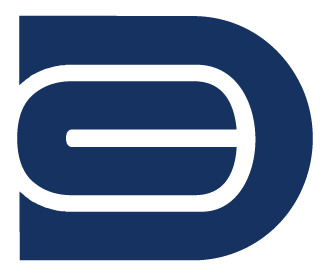Performance Management: Looking Inside The Box
-
Advantages of conducting internal reviews - continuous improvement initiatives can drive cross-functional efficiencies and foster long-term advantages
How to complete a comprehensive internal review - internal reviews should be conducted by a team who can operate outside of BAU and can strategically focus on the internal review
Conducting efficient and proactive internal reviews - a more proactive approach to internal reviews can help avoid reactive decision making
“The benefits of consistent and accurate internal reviews extend beyond immediate cost savings. Comprehensive internal reviews can both improve operational performance and reduce overlap between functions. ”
Cost control is the top priority for many businesses in today's market – the 'year of efficiency' is here. Yet businesses often fail to look inwards and can struggle to resolve problems or realise opportunities.
Earl Nightingale, a business development coach, used the analogy of a farmer who sold his land to fund his hunt for diamonds, only to discover that the land he had sold was sitting on a diamond mine. [1]
Walmart provides a recent example of how looking inwards can drive efficiency. By changing lightbulbs in stores to a more cost-effective alternative, Walmart identified an opportunity to save $200 million. [2]
Advantages of Internal Reviews
The benefits of effective internal performance management are not limited to immediate cost savings. Continuous improvement initiatives can drive cross-functional efficiencies and foster long-term advantages.
End-To-End Process Visibility: By mapping the inputs received, activities undertaken, time expended, and outputs produced, managers can identify bottlenecks and change opportunities. You can't improve what you don't measure.
Communication Channels and Accountability: By understanding the interaction and communication channels between stakeholder groups, organisations can establish clear accountability and establish a smooth transition of responsibility throughout a process.
System Utilisation: By pinpointing which systems are being used effectively, organisations can improve operational performance, reduce overlap between functions and improve quality.
How to Complete a Comprehensive Internal Review
Assign a Process Owner: Assemble a team, who can operate outside of business as usual (BAU) and strategically focus on the internal review. (see our previous blog post). Often it can be beneficial to employ a consultancy or external resource, who are unencumbered by the demands of BAU activities.
Walk Through Existing Processes: Create detailed process maps to identify the current state (As-Is) and facilitate collaborative workshops with stakeholders who currently interact with the process.
Capture Risks and Opportunities: Identify problem areas in which new enhancements can drive greater efficiency.
Develop Strategies to Meet Requirements: Produce a holistic plan, detailing the recommendation’s cost, time, and resource implications, including quantified benefits. Engage with the stakeholders to ensure buy-in across all levels.
Implement Proposed Recommendations: Standardise and optimise the proposed strategy, to ensure roles are clearly defined and effective governance is established. Monitor and measure benefits.
Many companies will only undertake comprehensive internal reviews following a major crisis. A more proactive approach can help to prevent such events and avoid reactive decision-making. However, internal reviews can be time-consuming and costly, particularly in large or multi-departmental organisations.
Conducting Efficient and Proactive Internal Reviews
Three key guidance points are provided to help organisations to optimise their internal reviews and avoid time sinks:
Organisation and Consistency: Undertaking irregular reviews can significantly reduce the applicability of your findings. However, consistent reviews with a clear objective will ensure that outcomes are relevant and impactful. Implement and enforce a regular cadence for review meetings.
Stakeholder Engagement: Ensuring that stakeholders appreciate the value of internal reviews will elicit greater engagement. Maintain focus and momentum by communicating benefits, next steps, and actions clearly. Use interactive tools to improve participation and outcomes.
Departmental Approach: Company-wide reviews can lead to surface-level observations. However, by reviewing smaller sections or single departments, organisations can utilise focussed stakeholder knowledge and capture nuances, including dependencies.
Contact us to hear about Deecon’s experience in reviewing, optimising, and implementing value drivers across companies, their processes, and their systems. We work with our clients as partners to strengthen internal capabilities and deliver tangible change.
Get in touch
Research by Ashton Harsh
Words by Anna Pringle
References
[1] Nightingale E (2015) The New Lead the Field
[2] https://www.cnbc.com/2018/10/16/walmart-saves-200-million-by-changing-its-light-bulbs.html






